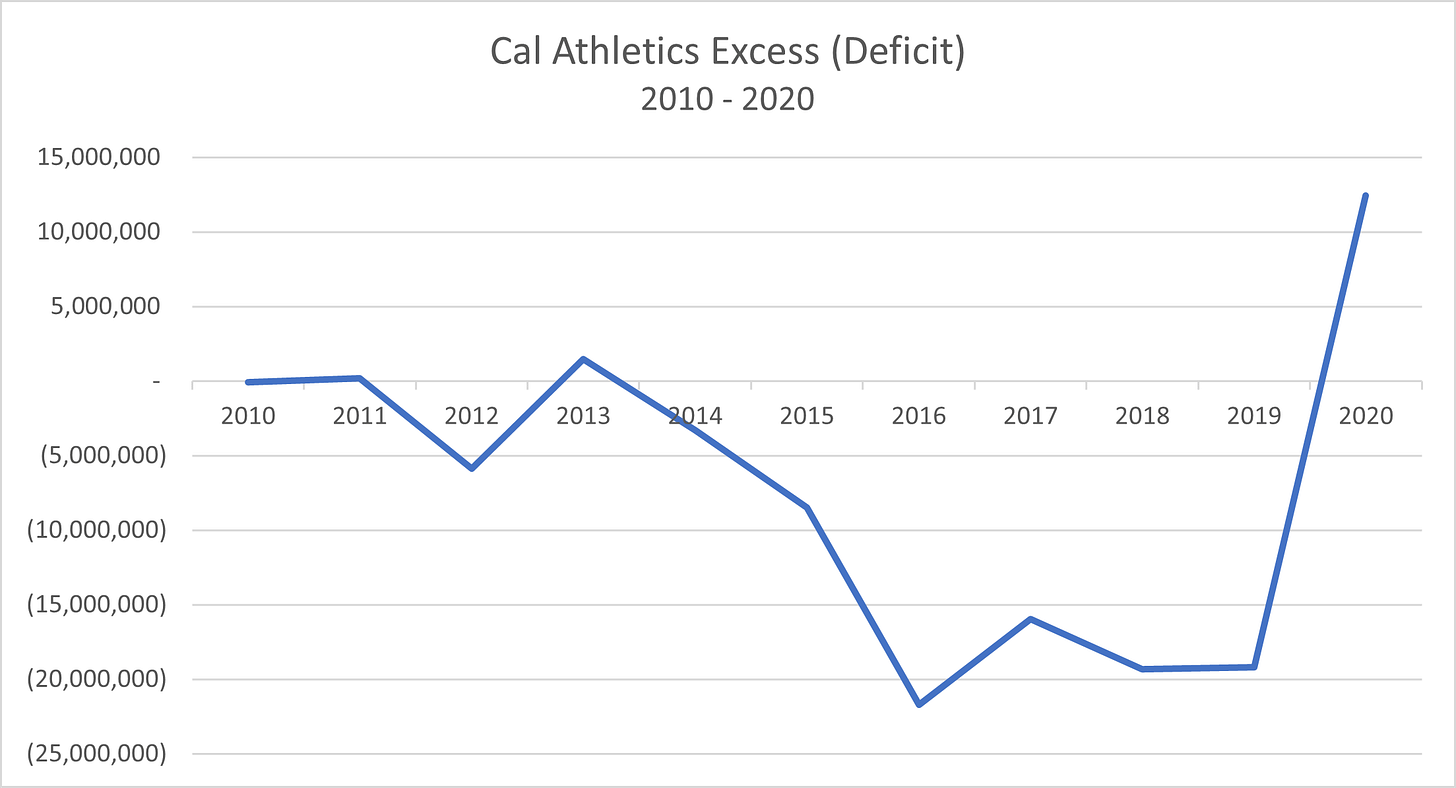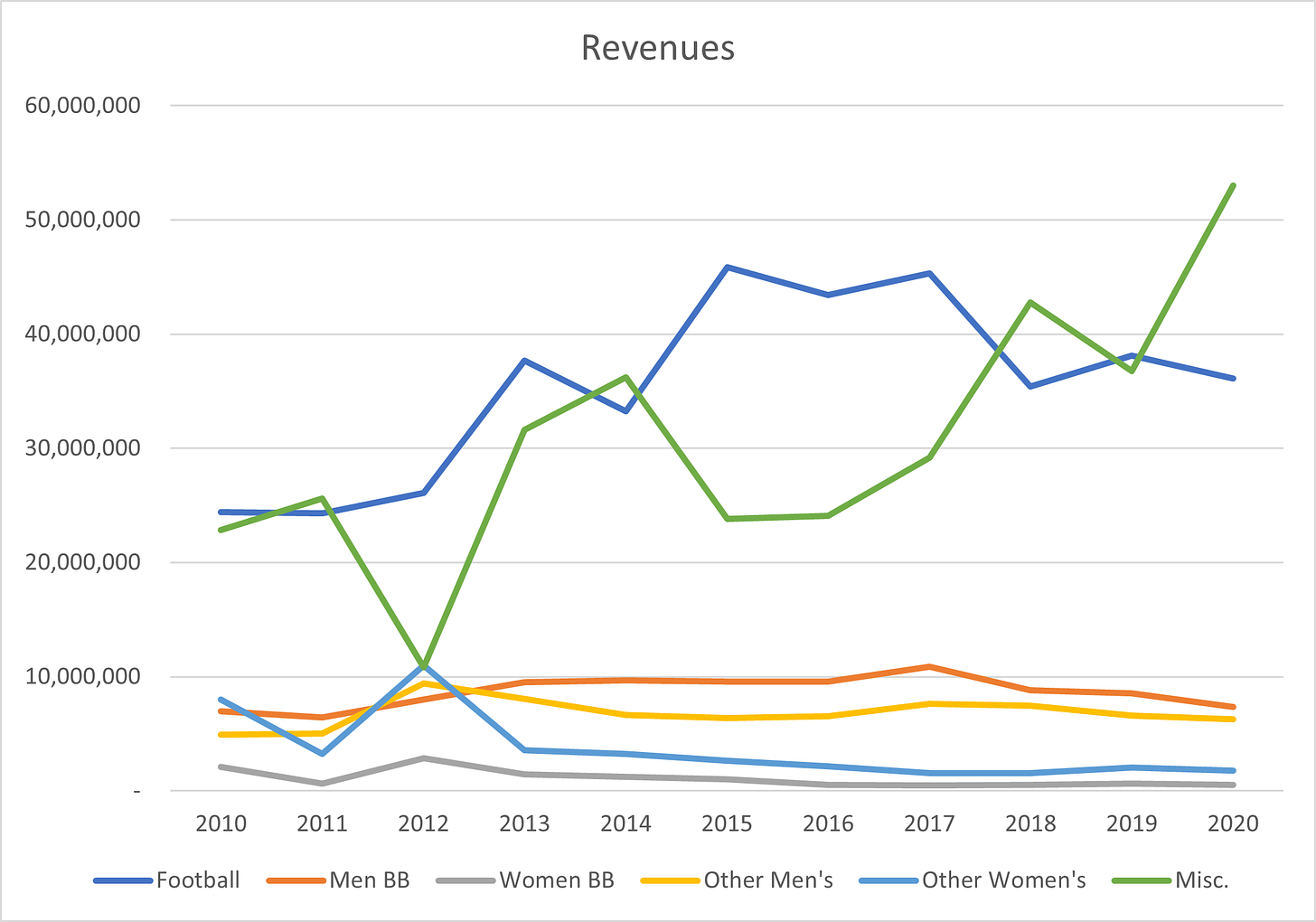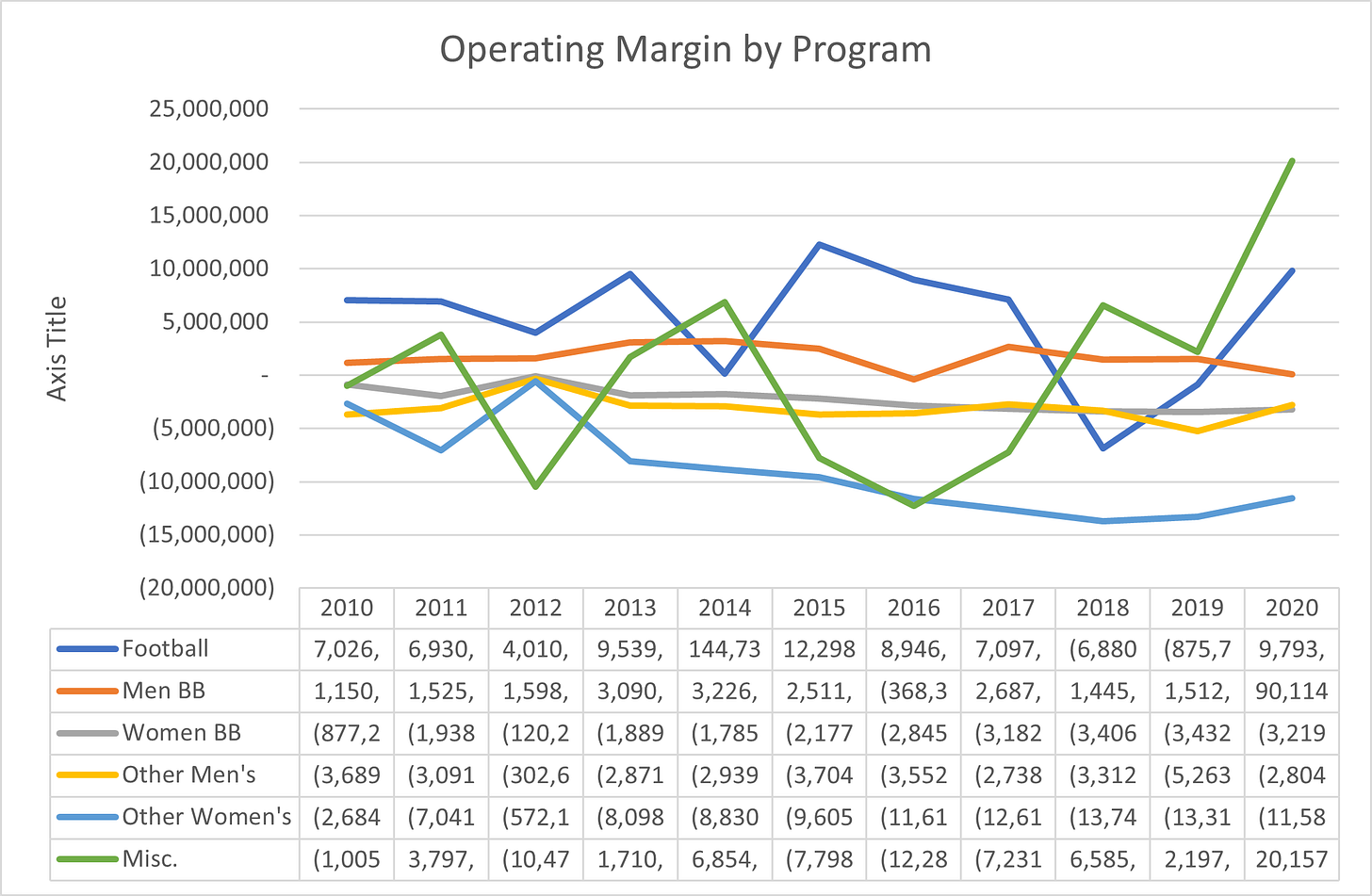Cal Athletics Turns $12.4 Million Budget Excess
For Fiscal Year Ending June 30, 2020
Cal Athletics turned a $12.4 million operating excess in the Fiscal Year ending June 30, 2020, after six consecutive years of deficits, losing $14.7 million annually on average. This is a huge turnaround for the Cal Athletics department under the leadership of Jim Knowlton. The excess ultimately was decreased to $3.2 million after $9.3 million of debt payments and capital expenditures. After a decade that saw consecutive 8 figure losses, FY 2020 has proven to be a stark and welcome contrast.
From an outsider’s perspective, prior to the release of the 2020 financial statements, Cal Athletics appeared to be in a world of trouble. With the Coronavirus pandemic effectively shutting down collegiate athletics in California for nearly a year, it appeared that Cal Athletics was going to have to make drastic cost-saving measures. Those measures may have included cutting several deficit-contributing programs, which may have led to further cuts of additional net-neutral men’s programs due to Title IX compliance requirements.
As 2021 still has the potential to be a significant down year due to the continuation of Coronavirus restrictions in the State of California, the program is not out of the woods just yet. Revenue from athletic activities was down 3.6 million (4.1%) in 2020 and will likely persist in 2021. This will most likely be due the absence of gameday revenue and most television revenue across all sports, especially football. The increase is therefore solely driven by an increase in miscellaneous revenue, which was up $16.4 million to a total of $53 million in 2020, a 44% increase from 2019.
Cost savings found in football, were the primary driver of the turnaround. Football expenses decreased from USD 39 million in 2019 to USD 26.3 million in 2020. This may partially be due to former football head coach Sonny Dyke’s contract expiring at the end of 2018. In addition, expenses for non-football and basketball men’s and women’s sports decreasing their expenditures by 24% and 13%, respectively.
According to USA Today’s 2019 NCAA finances data, this would place Cal Athletics in the top 10 of programs nationwide in terms of gross budget excess and inside the top 40 in terms of total revenue with $105 million. To put that in perspective the top revenue generating program is the University of Texas with $224 million.
Amongst the Pac 12, $105 million in annual revenue places Cal sixth out of ten athletic departments (USC and Stanford do not report financials as they are private institutions – safe to say the USC is likely the highest grossing program in the conference). Cal Athletics’ 2019 deficit was the largest, with the conference averaging $1.6 million dollar deficits with Cal, USC, and Stanford excluded. However, the program’s $12.4 million excess in 2020 ranks the highest in the conference amongst 2019 results.
During the summer of 2020 Under Armor, Cal’s apparel supplier, tried to cancel the remainder of a 10-year $86 million sponsorship agreement. There was even some speculation as to whether the final version of the agreement had been ultimately signed. While the relationship between Cal and Under Armor may have been irreparably damaged, it appears that legally speaking, the sponsorship agreement is set to continue to pay out for the time being. UCLA faced a similar situation and has since signed with Nike and Jordan Brand for a reported $7.7 million annually.
It appears that Jim Knowlton and his team are starting to make strides in making the athletic department financially sustainable. While many Cal fans may be disappointed that they have not yet received their free Chick-fil-A sandwiches at football games – a tactic Knowlton used during his time at the Air Force Academy to lure fans into the stadium – it will come as a relief to many sports that may have been on the verge of being cut. Time will tell if the expense cuts and revenue increases will have staying power.
As always, the best way to support Cal Athletics spiritually, emotionally, and financially is to go to events and support the teams. Go bears.





1. This is a June fiscal year-end, so the heart of Covid's impact will hit in FY21. The full damage isn't known yet, but it'll probably be pretty bad.
2. UC Regents saved Athletics, which transferred an additional $20m to its athletics "subsidiary". Regents essentially kicked the can down the road because they would have been smashed by a loss of donations if they didn't support Athletics. Also, the "profit" is probably to finance athletics against a probable bad FY21 fiscal deficit. Meanwhile, UC Berkeley swung from a $60m gain in position to a whopping $148m loss. The loss is due to a rise in payroll expenses, rather than any change in revenues. This will not shock you, but UC Berkeley is underfunded by the State of California. The main university can withstand losses for longer, but I have no idea how much longer.
3. Cal lost $3m in ticket sales for the fiscal year ended June 30th, but travel fell by $2m.
4. Cal lost $0.7m by going to the Cheez-Its Bowl. It broke even by going to the Red Box Bowl because it was within driving distance.
5. Athletic aid for non-revenue sports fell by about a million (about 15%). This infers that scholarship levels were cut.
Does this mean we can hire a new basketball coach? Please, please pretty please!